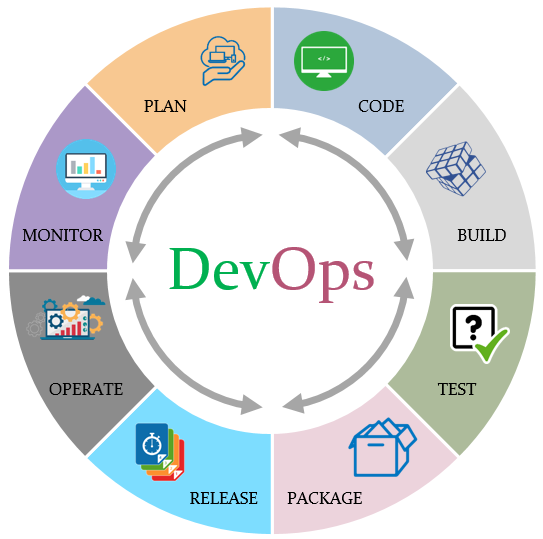What is the Relationship between DevOps and Cloud
IT organizations have kept development and operations teams as separate units for years. Even with the similar business goals, these parallel functioning teams usually remain at odds with each other. Now, the organizations have realized the need to develop an integrated functioning model which leads to the development of the DevOps methodology. DevOps model is much more than a simple implementation of agile principles to control the infrastructure. DevOps has become a way to promote collaboration between the development and operations teams. As it eliminates barriers posed by geographical location, business goals, and business functionality, both the teams tend to come closer on various aspects.DevOps has led to Continuous Integration, Continuous Deployment, and Continuous Delivery. Moreover, many DevOps automation tools will be released that will refine the existing way of software development.
DevOps minimizes silos and gaps by eliminating the boundaries between conventional developer and operations roles. This ensures business continuity, accountability, and desired results across groups.Businesses can deal with changing requirements faster with DevOps agile methodology. Simply, DevOps is a collaboration between operational and development team that aims to enhance efficiency and faster delivery of products to customers.

Role of DevOps in the Cloud when helping organizations
It may be helpful to consider the Software Development Life Cycle and the role of cloud solutions at each stage. To make this easy, let’s just consider the build, test and run phases.
- Build –
Advanced applications need complex technology stacks that require a great effort to develop and configure. Cloud computing has delivered developers seamless access to development platforms in minutes, instead of months needed earlier. It instantiates a LAMP stack (Linux, Apache, MySQL, and PHP), and complicated application ecosystems like SAP in a single click and development teams can work instantaneously.
Furthermore, this results in huge time savings and on-demand availability lowers upfront investments as it eliminates the need for running the systems when not in use. Highly valuable, but less tangible, is the feature to discover and test new approaches and technology components emerging from the high accessibility that cloud delivers.
- Experiment –
A right DevOps approach encompasses doing all the innovative or manual work up front in the build phase, and the remaining SDLC is an entirely automated pipeline. Automated testing is vital to turn vision into a reality, and the capability to automatically build and tear down test environments is necessary to end automated testing successfully.
Then also, the Cloud offers seamless capabilities to instantiate test environments of higher complexity as you move through the delivery pipeline. In order to shift from test to production a “non-event,” testing should be done in an environment that is similar to production. Traditionally, this was a complete impossibility with testing regularly being done on a couple of servers with small amounts of data and the other applications and techniques responsible the production environment. The test environments that start to approach the complexity and scope of production can be developed quickly and cost-effectively with the cloud.
- Run –
Deploying to production frequently requires new or additional infrastructure. Cloud offers high speed in developing operational environments that are scalable, flexible, and resource efficient.
Moving to Cloud Operations
Just like DevOps aims for continuous innovation and faster delivery of software from development through operations, Cloud Operations also call for continuous operations & improvement — but in cloud environments.
Contrary to traditional on-site setup, CloudOps encompasses explaining right operational techniques and practices around various cloud models or services, business is presently leveraging, be it a SaaS, IaaS, or a PaaS application. Due to this reason, the dynamics included in development and operations using ‘as-a-service’ models are entirely different. Even though these services offer the convenience and flexibility of speedily deploying and managing an application over an infrastructure, it can be difficult to maintain them throughout teams.
Therefore, today’s DevOps must understand how to upgrade the underlying distributed cloud infrastructure as they scale out, while also operate applications that share similar services while maintaining those operations concurrently. Moreover, DevOps need to focus on the metered cost of all the cloud services they are using, which is where today various cloud management platforms have proliferated to help them out. Additionally, they should help to shift the operational burden to the vendor.
You want to migrate to the cloud, but not sure where to begin?
This is where our experience can help transform your business. JSTS is unique because we understand the real impact of a cloud migration on all areas of your business and the immense opportunities it brings. Having strong technical expertise is not enough. The real value in the cloud lies in transforming and automating your underlying processes and practices. JSTS is an expert in this.
This free assessment will provide a starting point for you on where to begin and what overall will need to be done to migrate to the cloud. It will also provide you with the overall benefits your company will achieve once moving to the cloud.
Contact us today to discuss our complementary cloud migration assessment service. We’re here to help.